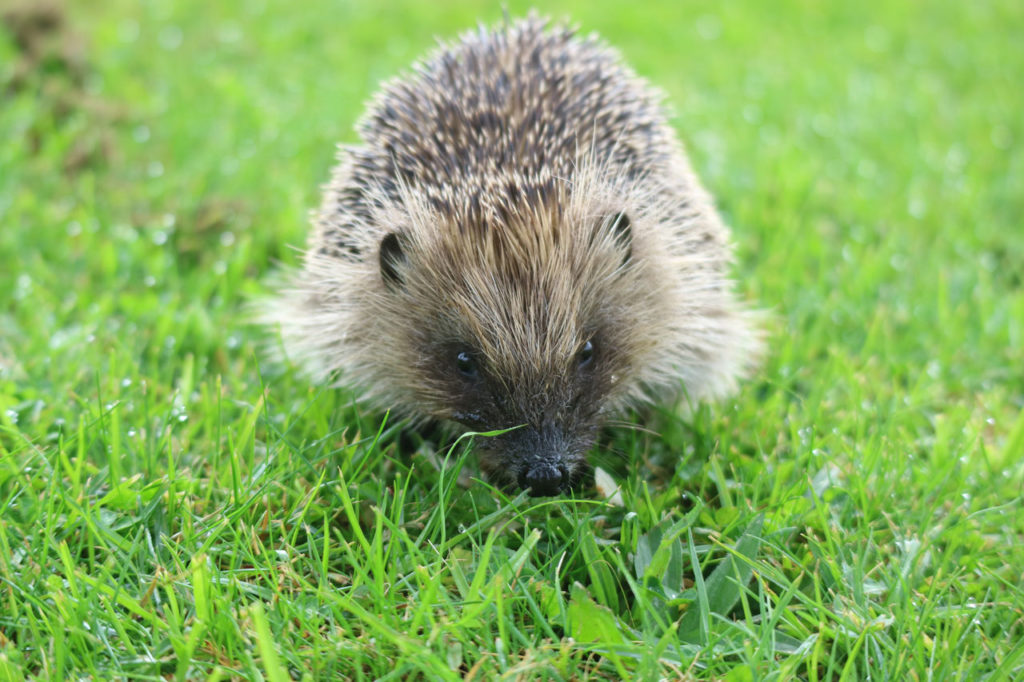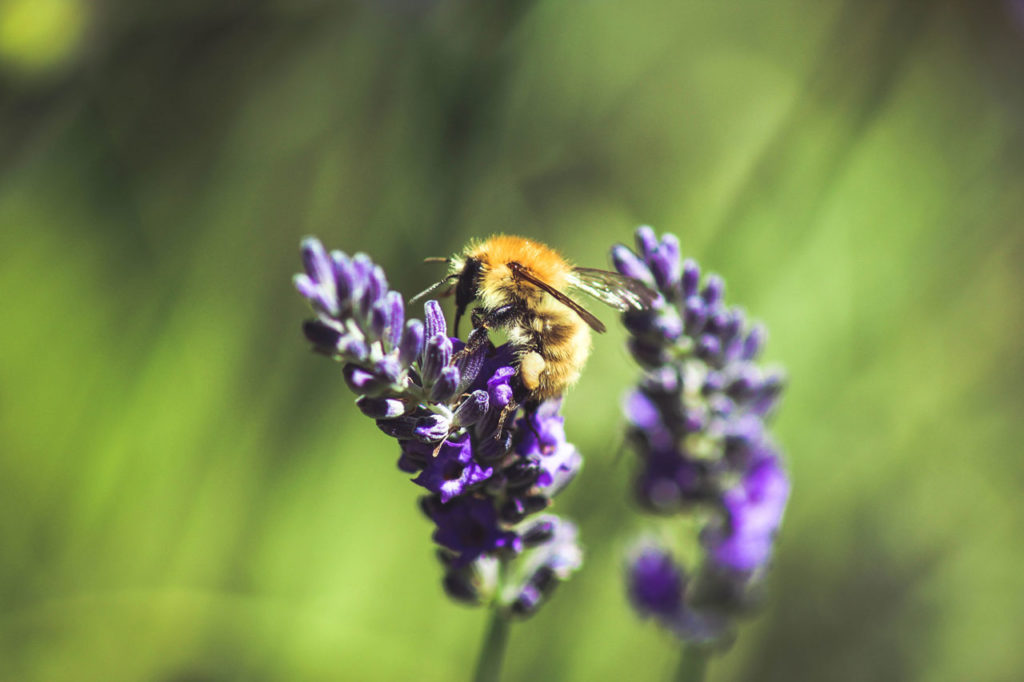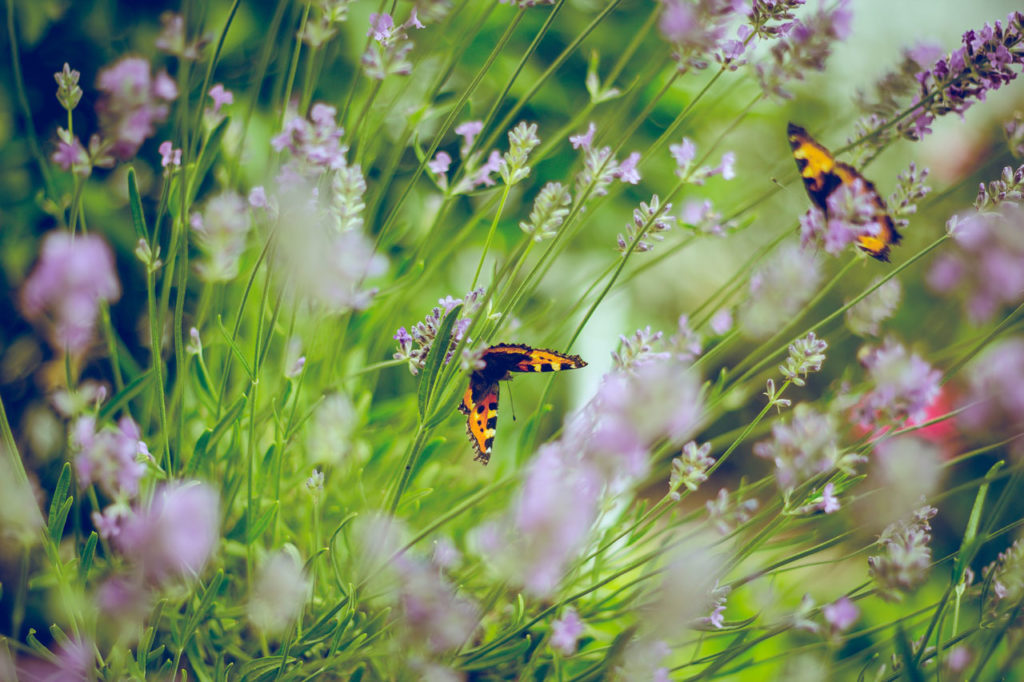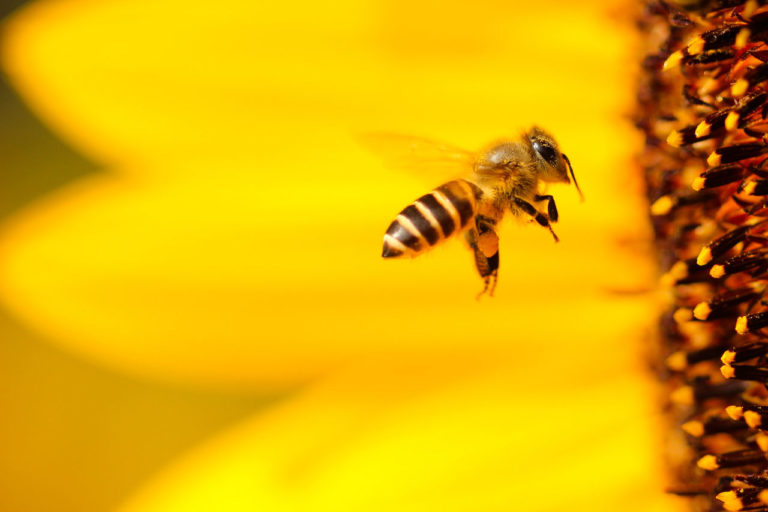Have you heard that robotic mowers can be dangerous for hedgehogs, bees and other small animals? Well, unfortunately, it’s true. But if you happen to be a robotic mower owner, you can do something about it. Learn why mowing robots are dangerous for hedgehogs, bees and other animals and what you can do, here.
Why are robotic mowers dangerous for hedgehogs and bees? Hedgehogs are mainly active at dusk and at night, and many robotic mowers also work at this time. As hedgehogs do not run away from danger, but rather curl up, they are often fatally injured by robotic mowers. At the same time, bees and other insects cannot find food in the areas of the lawn which are always mown bare.
However, there are a number of things you can do to ensure that your yard is still an animal-friendly and ecological place, despite the use of a robotic mower.
I consider the protection of the environment and nature to be very important, and even though I am enthusiastic about robotic mowers, these ecological problems are something that bothers me a lot. Besides the reality that there is a danger for many small animals like hedgehogs in the yard, I also find it worrying that on a continuously mowed lawn there is neither a food supply nor shelter for insects, especially considering the current issue with dramatic insect mortality rates.
But a mowing robot does not have to be an ecological problem if you pay attention to a few things and redesign your garden a little bit.
Contents
Why Are Robotic Mowers So Dangerous for Hedgehogs?
Hedgehogs are particularly endangered by robotic mowers, as they are active at dusk and at night and many mowing robots also mow at this time. Many robots are programmed to mow either during the early morning hours and in the morning and/or in the evening.
This makes a meeting between the mowing robot and hedgehog very likely. Additionally, there is another factor which increases the danger to hedgehogs many times over: They do not run away when faced with danger, but rather curl up in place. This is a self defense mechanism which hedgehogs use to protect themselves from predators, but it unfortunately does not protect from the sharp blades of a mowing robot.
As a result, the sharp rise in the number of mowing robots in yards has recently led to more and more accidents involving hedgehogs which have been severely, often fatally, injured.
which have been severely, often fatally, injured.
Hedgehogs are also small enough that they are not recognised as an obstacle by robotic mowers and are simply rolled over. Robotic mowers can also destroy a hedgehog’s food supply, as they drive insects, earthworms, snails and more out of the yard, all things which the hedgehog likes to eat.

What You Can Do to Protect Hedgehogs
There are several things you can do to protect hedgehogs from potential danger from your robotic mower.
- Change mowing times – If possible, change the mowing times of your robotic mower so that it does not mow at night or at dusk. Do this, and hedgehog accidents are virtually eliminated, since hedgehogs are not typically active during the day.
- Larger model – If the area capacity of your robotic mower does not allow you to avoid mowing at night and in the evening, you can also opt for a larger model so that the robot can fully complete its work during the day.
- Hedgehog protection/apple guard– You can attach a makeshift grate to the front of your robotic mower to protect hedgehogs. You can use a perforated sheet
 for this, for example. You could also decide to take a piece of flexible metal or plastic and make a guard that you attach to the front of the robot. These also help to prevent apples from getting under the robot.
for this, for example. You could also decide to take a piece of flexible metal or plastic and make a guard that you attach to the front of the robot. These also help to prevent apples from getting under the robot. - Choose a louder model – The volume of the mowing robot varies from 56 dB to 75 dB. That’s a pretty big difference. If the hedgehog hears the mowing robot from a distance, they will be more likely to move out of the way, rather than curl up, because they won’t be taken by surprise when the mower reaches them.
If you also ensure that bees and insects can survive in your yard despite your robotic mower, and have a food source, you are also doing your hedgehog a favor, as these insects in turn serve as a food source for the hedgehog. By the way, hedgehogs also eat snails.
This is Why Mowing Robots Are Problematic for Bees and Other Insects
The daily mowing of your lawn by the robotic mower is therefore problematic from an ecological point of view, as a constantly short-mowed lawn offers practically no flowers, various insects eat for survival, such as bees and butterflies. Other insects and even arachnids, which eat these insects, are also deprived of food this way.
Bees in particular are extremely important for keeping ecological balance, as they are considered the most important pollinators of plants. You might have heard that bees have been dying globally in unprecedented numbers in recent years. Not only that, studies have also found that 41 % of insect species have seen steep decline in the last decade.
The situation is already so bad that, for example, in parts of China, pollination of commercial fruit trees has to be done by humans. Otherwise, the trees could no longer bear fruit because there are no insects left to do the job.
This could soon have dramatic consequences for agriculture all around the world. So you see, the situation is extremely serious and is now everybody’s business to help counteract.

On a domestic lawn, which is regularly mowed short by a robotic mower, there is virtually a monoculture of a single species of grass. This is what the lawn owner actually wants, but without thinking about the importance of ecological diversity.
But does this mean that you can only have either a beautiful, perfectly mowed lawn or an ecologically healthy yard? No, because you can have both!
Create a Food Supply for Bees and Other Insects
There are several ways you can make your yard more insect friendly again. For example, you can create extra wildflower islands on your lawn These provide food for bees and other insects. Insects can also use these islands as shelter from predators.
You can also improve the food supply for bees on the edges and in the corners of your yard by planting specific plants. Bee-friendly plants that fit well into a flower bed are, for example:
- Lavender
- Asters
- Yarrow
- Mallow
- Columbine
- Lupine
On deck or patio, the following plants are good for bees:
- Kitchen Herbs
- Lantana
- Wallflowers
- Nasturtium
- Edging Lobelia
- Snapdragons
Shrubs and similar large plants bees like:
- Gooseberry
- Raspberry
- Blackberry
- Currant
- Blackthorn
- European Spindle
- Ivy
- Virginia creeper
- Groundcover roses
Trees and even larger plants:
- Cornelian Cherry
- Hawthorn
- Pussy Willow
- Japanese Pagoda Tree
- Castor Aralia
- Honey Locust
- Any fruit tree

If you do everything perfectly, your yard will consist of a balanced mixture of spring, summer and autumn flowers.
All in all, you can ecologically enhance your lawn by mixing plants in a balanced way and creating various sanctuary areas and pockets of food supplies for insects. In this way, you balance the lawn instead of creating a harmful monoculture. Small “survival islands” are already very effective in diversifying and supporting insect populations in yards. Of course, more insects will of course help the hedgehog to find more food.
Related Questions
Are robotic mowers dangerous for pets? Robotic mowers can be dangerous to pets. Despite the high safety requirements in place for robotic mowers, they do occasionally cause pet injury. Therefore, mowing robots should be used at times when there are no pets in the yard, or they are under supervision.
08/20/2020
Recent Content
Are you looking to buy a robotic lawn mower? I think there has never been a better time, since the most recent models on the market are actually quite sophisticated so that it can now be appealing...
High-end robotic lawnmowers can be a significant investment, so I was curious about how often they get stolen and did some research on the topic. Although there is no specific data available on...

